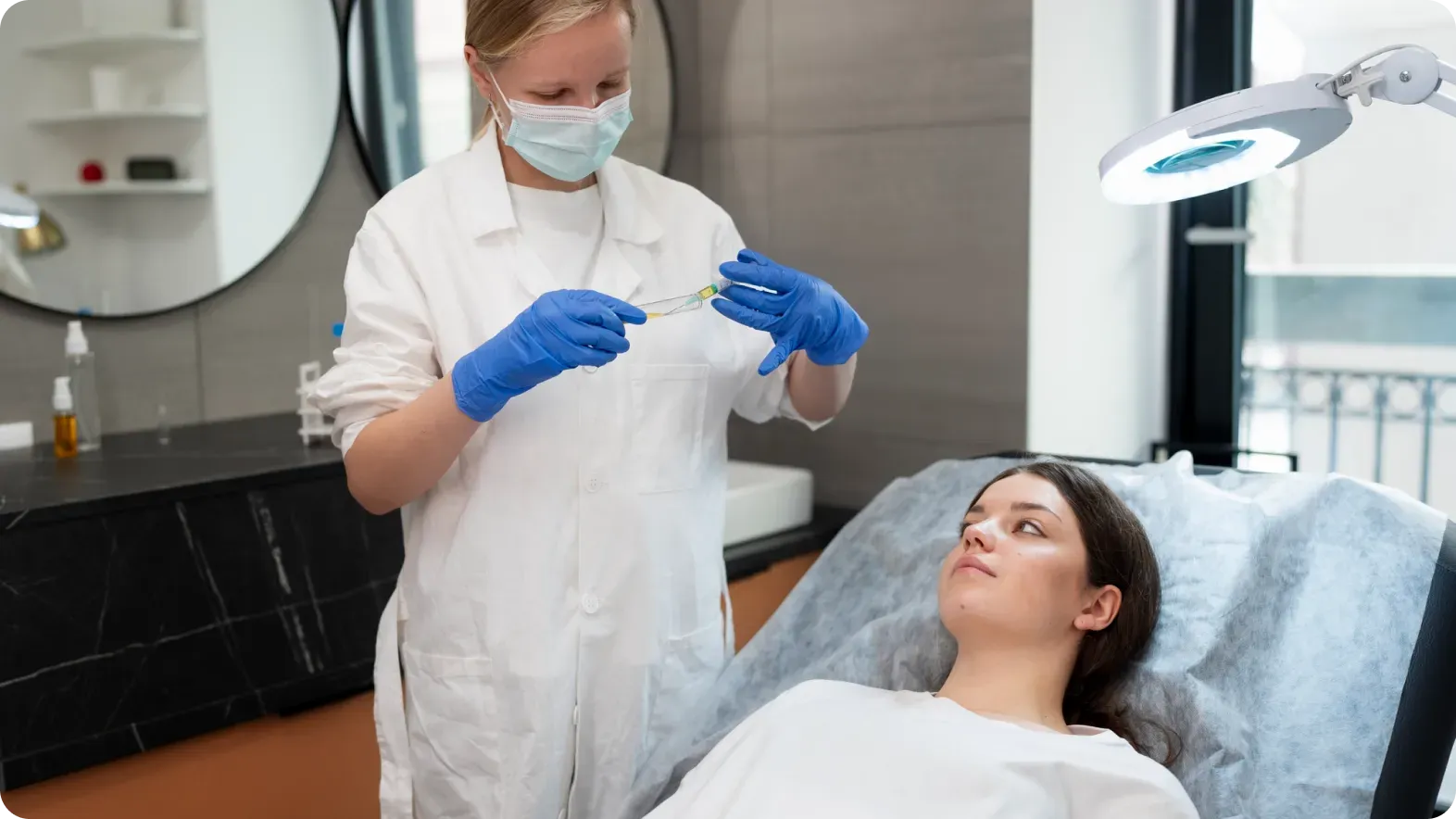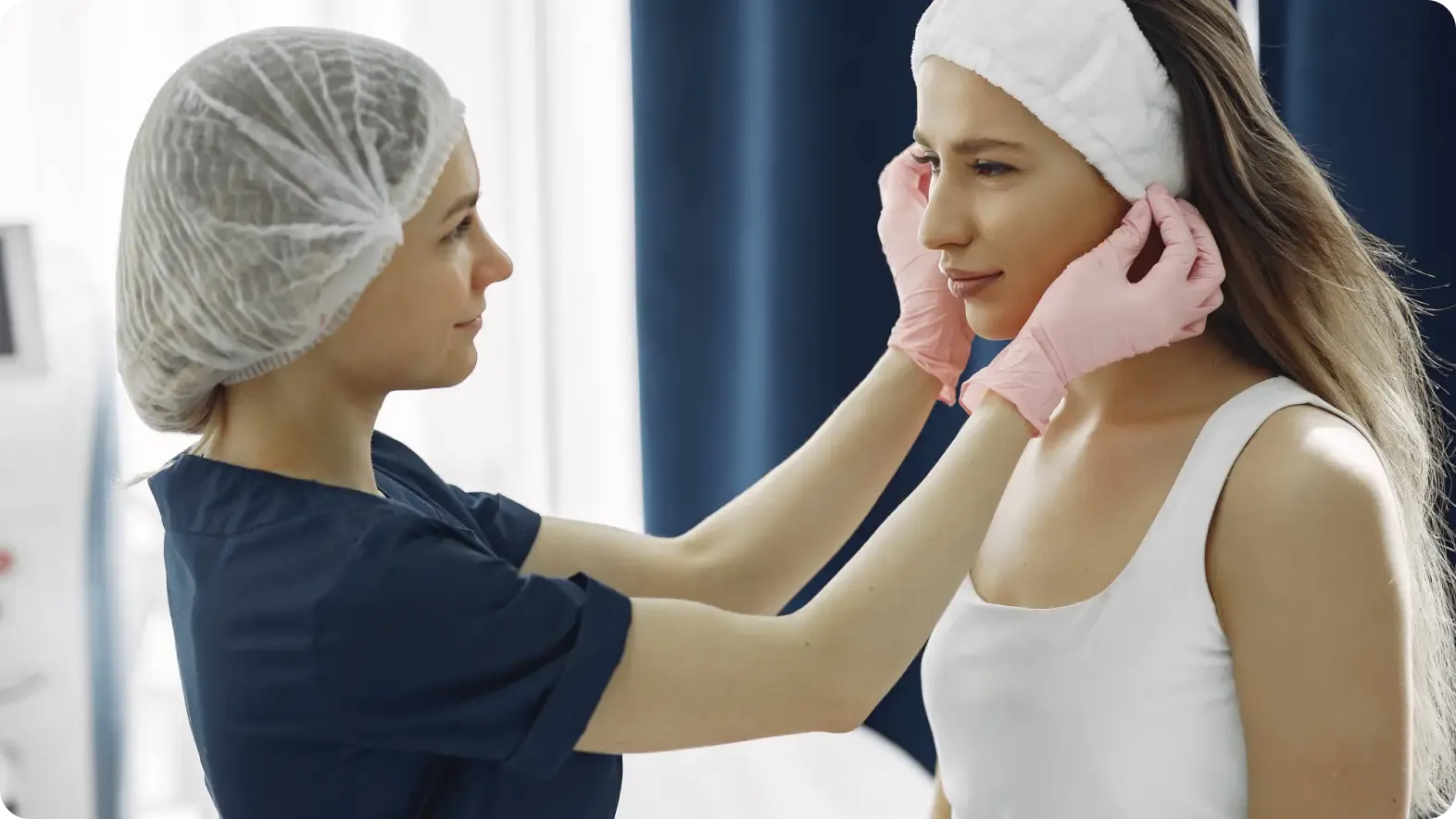What to Expect on the Day of Surgery: From Anesthesia to Packing to Going Home — The Day-Of Process
November 5, 2025
Surgery—big or small—follows a carefully choreographed plan built around safety, comfort, and clear communication. Knowing what happens from check-in to going home can ease nerves and help you prepare in a way that really matters. Below is a practical, step-by-step look at the day itself. Policies vary by hospital and procedure, but this framework reflects widely used standards and best practices.
Preoperative Logistics and Arrival
Final pre-op verification: identification, consent, site marking, and safety checks
Your day kicks off with safety checks. Several team members will confirm your identity using two identifiers (usually your full name and date of birth) and match them to your wristband and medical record. Your surgeon will review and re-confirm consent—purpose, alternatives, risks, benefits—just to make sure you’re comfortable and on the same page. If your procedure involves a specific side or site (say, right knee arthroscopy), your surgeon will mark it with a permanent marker per the Universal Protocol to prevent wrong-site surgery. Feel like you’re repeating yourself? That’s on purpose. Redundancy protects you.
Fasting (NPO) status, medication reconciliation, and allergy confirmation
Next up: when you last ate or drank. Teams verify that you followed fasting (NPO) instructions, which typically look like:
- Clear liquids up to 2 hours before anesthesia (unless told otherwise)
- A light meal 6 hours before
- No gum, mints, or smoking the morning of surgery
- Continue: beta-blockers; many inhalers; most antidepressants
- Often hold: ACE inhibitors/ARBs on the morning of non-cardiac surgery (depends on context); SGLT2 inhibitors 3–4 days pre-op to reduce euglycemic DKA risk; certain antiplatelets/anticoagulants per a bridging plan; and GLP-1 receptor agonists may be continued or adjusted based on current guidance and your symptoms
- Supplements: many (like fish oil, garlic, ginkgo) are stopped due to bleeding or anesthesia interactions
What to pack and what to leave at home: documents, essentials, and medical devices
Pack light and keep it simple:
- Bring: photo ID, insurance card, payment method (if needed), a current medication list with doses, advance directives, and your escort’s phone number. If you use CPAP, bring your device and mask. Pack your inhalers, eyeglasses with a case, and hearing-aid cases. Using an insulin pump or CGM? Bring spare supplies and your settings.
- Wear: loose, front-opening clothing and slip-on shoes. Skip makeup and nail polish (they can interfere with monitoring).
- Leave at home: jewelry (body piercings included), valuables, and large amounts of cash. Remove contact lenses; you can keep your glasses on until anesthesia begins.
Check-in through pre-op holding: vitals, IV access, prophylaxis, and risk screening
After check-in, you’ll change into a gown and store your belongings. In pre-op holding:
- Nurses take your vital signs, start an IV, and review your history.
- You may get preoperative prophylaxis: antibiotics (timed for the incision), VTE prevention like intermittent compression devices, and glucose management if needed.
- Risk screens often include fall risk, bleeding risk, obstructive sleep apnea (e.g., STOP-Bang), frailty, and pregnancy testing when appropriate.
- Depending on your procedure, you might receive nasal decolonization, antiseptic skin wipes, or a warming blanket to maintain normal temperature.

Anesthesia Consultation and Intraoperative Planning
Anesthetic options: general, regional, monitored anesthesia care, and local infiltration
Your anesthesia plan is tailored to you:
- General anesthesia: You’re fully asleep; your airway is supported with a breathing tube or laryngeal mask.
- Regional anesthesia: Nerve blocks or neuraxial techniques (spinal/epidural) numb a specific region—often combined with light sedation.
- Monitored anesthesia care (MAC): IV sedation plus local anesthesia from the surgeon; you may be awake but relaxed.
- Local infiltration only: The surgical area is numbed; used for minor procedures.
Airway assessment, ASA physical status classification, and individualized risk discussion
Your anesthesia professional will assess your airway (Mallampati score, mouth opening, neck mobility) to plan safe ventilation and intubation if needed. You’ll receive an ASA Physical Status classification (I–VI), a standard way to describe your baseline health and contextualize risk. Expect a focused discussion on things like prior anesthesia reactions, obstructive sleep apnea, reflux, heart or lung disease, and your PONV (postoperative nausea and vomiting) risk.
Prophylaxis and optimization: antibiotics, antiemetics, VTE prevention, and glycemic control
Evidence-based measures begin before the first incision:
- Antibiotics: First dose within 60 minutes of incision (120 minutes for vancomycin or fluoroquinolones), with redosing tied to drug half-life and blood loss.
- Antiemetics: Multimodal PONV prevention matched to your risk (e.g., ondansetron plus dexamethasone; scopolamine patch for high risk).
- VTE prevention: Mechanical compression devices and, when appropriate, low-dose heparin; early ambulation is encouraged post-op.
- Glycemic control: Frequent glucose checks; insulin as needed to maintain target ranges; coordination with insulin pumps/CGMs.
Informed consent, sedation depth, and multimodal postoperative analgesia strategy
You’ll review anesthesia consent and confirm preferences regarding blood products, implants, and what happens if something unexpected turns up. The team will explain the planned depth of sedation and what to expect afterward. For pain, the approach is multimodal—scheduled acetaminophen and NSAIDs (if safe), regional blocks, local anesthetics, and limited opioids to curb side effects while keeping you comfortable.
Intraoperative Workflow and Safety Protocols
Operating room handoff: team introductions, monitors, and positioning precautions
When you roll into the OR, you’ll meet the team—surgeon, anesthesia professional, nurse, scrub tech, and possibly trainees. You’ll be connected to standard monitors and positioned carefully with padding to protect pressure points and nerves. Eyes are protected. Special devices (arm boards, egg-crate pads, safety straps) help reduce nerve injury and skin breakdown.
The surgical safety checklist: sign-in, time-out, and sign-out
Most hospitals use the WHO Surgical Safety Checklist:
- Sign-in (before induction): identity, procedure, site marking, allergies, airway/aspiration risks, equipment checks.
- Time-out (before incision): everyone pauses to confirm patient, procedure, site, imaging, antibiotics, and key steps.
- Sign-out (before leaving the OR): instrument and sponge counts, specimen labeling, priorities for recovery, and any equipment issues.
Intraoperative monitoring: ECG, pulse oximetry, capnography, temperature, and fluids
You’re continuously monitored:
- Electrocardiography (ECG) for heart rhythm
- Pulse oximetry for oxygen saturation
- Noninvasive blood pressure at regular intervals
- Capnography to confirm ventilation and tube placement when relevant
- Temperature monitoring to prevent hypothermia
- Urine output in selected cases
Aseptic technique, specimen handling, and operative documentation
Sterile technique is maintained throughout. Any specimens are labeled with two patient identifiers and precise source descriptions; special chain-of-custody rules apply when needed. The operative note captures the indication, findings, key steps, implants, estimated blood loss, counts, complications, and the postoperative plan—critical for continuity of care.

Immediate Post-Anesthesia Care (PACU) and Early Recovery
Emergence from anesthesia: airway management, pain control, and reassurance
When surgery wraps up, you’ll be awakened and your airway managed safely. A sore throat (from a breathing tube), chills or shivering, and a bit of disorientation are common. The team treats shivering with warming measures (and meds if needed), reassures you as you wake, and begins titrating pain and nausea meds based on your preplanned regimen.
PACU monitoring: Aldrete scoring, nausea/vomiting management, and thermoregulation
In the PACU, nurses watch your vitals and overall status closely. The Aldrete score—activity, respiration, circulation, consciousness, and oxygen saturation—helps determine readiness for transfer or discharge. Nausea is treated with additional antiemetics (ondansetron, droperidol, promethazine as appropriate) plus non-drug measures (slow position changes, aromatherapy at some centers). Active warming and warmed IV fluids help maintain normal body temperature, which supports clotting and reduces cardiac stress.
Complication surveillance: bleeding, airway events, delirium, and PONV
PACU teams keep a sharp eye out for early issues:
- Bleeding/hematoma at the surgical site or drains
- Airway issues: laryngospasm, obstruction, or bronchospasm—especially with sleep apnea or reactive airways
- Delirium or emergence agitation—more likely in older adults or after certain meds
- PONV and dehydration
- Pain out of proportion (which warrants evaluation)
Criteria for transfer or discharge: hemodynamic stability, ambulation, and oral intake
Before you move to a step-down area or go home, you’ll generally need:
- Stable vital signs without high oxygen needs
- Pain controlled with oral meds or a self-managed plan (e.g., nerve block expectations)
- Minimal nausea with tolerable oral intake (clear liquids first, usually)
- Safe mobility for your procedure (from assisted walking to bed-to-chair)
- No worrisome bleeding and an acceptable wound check
- Discharge instructions understood by you and your escort
Discharge Preparation and Going Home
Discharge education: medications, wound care, and activity restrictions
Before you leave, a nurse or clinician will review clear written instructions. Expect details on:
Medications:
Medications:
- Scheduled acetaminophen and NSAIDs (if not contraindicated) are the backbone of pain control.
- Opioids, if prescribed, are for breakthrough pain—and only for as long as necessary; pair with a stool softener and good hydration.
- Antiemetics as needed.
- Restart timing for anticoagulants/antiplatelets and disease-specific meds (e.g., insulin adjustments) per your plan.
- Keep dressings clean and dry; change them as directed.
- Ask when you can shower (often 24–48 hours) and when to avoid soaking incisions.
- Some bruising and mild drainage are normal—know what’s “too much.”
- Weight-bearing status, lifting limits (e.g., “no more than 10 pounds for 2 weeks”), and how to use assistive devices (sling, brace, crutches).
- Breathing exercises or incentive spirometry after chest/abdominal surgery.
- Driving resumes when you’re off opioids, can safely control a vehicle, and your surgeon clears you—procedure-dependent.
Transportation, escort requirements, and legal considerations after anesthesia
Most centers require a responsible adult to take you home and stay available for the first 24 hours. Rideshare or a taxi alone doesn’t cut it after sedation or general anesthesia. Because judgment and coordination can lag:
- Don’t drive, operate machinery, drink alcohol, or sign legal documents for 24 hours—unless your team says otherwise.
- Have your escort hear the instructions with you and keep the written copy.
Home setup and safety: fall prevention, hydration, nutrition, and red flags
A little prep goes a long way:
- Safety: Clear tripping hazards, keep essentials at waist height, use night lights, and consider a shower chair or raised toilet seat if mobility will be limited.
- Hydration and nutrition: Start with clear liquids and bland foods; advance as tolerated. Protein supports healing. If nausea lingers, take antiemetics and sip fluids frequently.
- Bowel regimen: Begin stool softeners with opioids; add fiber and fluids to prevent constipation.
- Sleep apnea: Use your CPAP the first night (and beyond); consider side sleeping or head-of-bed elevation if recommended.
- Fever over 101.5°F (38.6°C) or shaking chills
- Worsening redness, swelling, or pus-like drainage from the incision
- Uncontrolled pain, inability to keep fluids down, or persistent vomiting
- Shortness of breath, chest pain, or one-sided leg swelling/pain
- New confusion, severe headache, or fainting
Follow-up appointments, documentation, and return-to-work planning
You’ll leave with:
- The date/time of your postoperative visit and instructions for suture or staple removal if needed.
- Implant cards (if you received hardware) and details on pathology follow-up for any specimens.
- Return-to-work and driving guidance. Timing depends on your surgery and your job:
- Minor arthroscopy or laparoscopic procedures: often 1–2 weeks for desk work
- Larger abdominal, thoracic, or orthopedic operations: several weeks to months
- Jobs with heavy lifting or safety-sensitive tasks may need longer restrictions
- Help with FMLA/disability forms if needed—ask who handles the paperwork.

Practical Examples to Set Expectations
Example 1: Ambulatory hernia repair under general anesthesia
- Arrive about 2 hours before start time; NPO verified; IV placed; prophylactic antibiotic given
- Time-out confirms right-sided inguinal hernia repair
- PACU stay of 1–2 hours; ondansetron used for mild nausea
- Discharged with acetaminophen plus ibuprofen, limited opioids, and a lifting restriction of under 10 pounds for 2 weeks
- Pre-op adductor canal block for pain control.
- Minimal opioids after surgery; focus on elevation, icing, and early range-of-motion per PT protocol.
- Education on protecting the limb until the block wears off (watch for knee buckling).
- Perioperative glucose checks; pump continued with temporary basal adjustments—or transitioned to IV insulin depending on case length and hospital policy
- Clear instructions for post-op carbohydrate intake and an insulin correction scale
Final Tips for a Smooth Day
Confirm your escort and ride the day before.
- Follow NPO instructions to the letter and take only the meds you were told to—with small sips of water.
- Bring your device list (CPAP, inhalers, pump/CGM) and any supplies you might need.
- Ask questions—seriously. Clarity improves safety and comfort.
- Expect some waiting. OR schedules can shift; the team will keep you in the loop.
Conclusion
From repeated ID checks to the WHO safety pause, from anesthesia planning to PACU monitoring, your surgery day follows a proven safety playbook—customized to you. Understanding the steps takes the mystery (and some of the stress) out of the day. Pack smart, follow the instructions you’re given, and speak up if something isn’t clear. With a little preparation and realistic expectations, you’ll move through surgery with confidence and head home ready to recover well.

Schedule Your Appointment with Dr. Mourad
If you are considering facial plastic surgery and want results that enhance your natural beauty without looking overdone, schedule a consultation with Dr. Moustafa Mourad today. You will receive personal, expert guidance at every step—from your first visit to your final result.
From Our Blog

November 7, 2025 | Dr. Moustafa Mourad | Uncategorized
How Long Until the Final Result? The Truth About Swelling, Shape Changes, and Patience After Rhinoplasty — Managing Expectations
Rhinoplasty is both a structural procedure and a healing journey. Everyone wants to know: when will I see “the final nose”? Fair question—just not a simple one. Bones, cartilage, skin, and mucosa recover on different timelines; swelling fades in waves; and the tip keeps evolving long after the splint comes off. The good news? When expectations match biology and timing, uncertainty turns into confidence. Here’s what happens, why it happens, and how to navigate the process with realistic checkpoints and smart strategies.
READ THE ARTICLE
November 7, 2025 | Dr. Moustafa Mourad | Uncategorized
Revision Rhinoplasty: Why Some Patients Need a Second Nose Job and What to Ask — Less Common but High Value
Elective rhinoplasty is one of the most technically demanding operations in facial plastic surgery. Even when everything goes “right,” tiny asymmetries, how scars mature, or lingering breathing issues can blunt an otherwise good first result. Most people are happy after their primary surgery. But a meaningful minority—often quoted in the literature as about 5–15%—consider a revision.
READ THE ARTICLE
November 7, 2025 | Dr. Moustafa Mourad | Uncategorized
What Age Is Appropriate for Rhinoplasty? Teen Patients and Adults — Evidence-Based, Age-Related Considerations
Rhinoplasty is one of the most personalized procedures in facial plastic surgery. Age matters—a lot. Not just the number on a birth certificate, but where someone is in facial growth, psychological readiness, and overall health. This guide pulls together the current thinking on how age affects candidacy and planning, comparing teen and adult patients and laying out practical safeguards that keep results safe, predictable, and natural.
READ THE ARTICLE
November 6, 2025 | Dr. Moustafa Mourad | Uncategorized
The Role of Skin Thickness, Nasal Cartilage, and Bone Structure in Your Rhinoplasty Outcome — An Anatomical Deep‑Dive
Every patient wants to know how long recovery will take after their facial plastic surgery procedure. The answer is that recovery isn’t the same for everyone. The timeline depends on the type of facial plastic surgery you choose, your individual healing response, and how closely you follow aftercare instructions. While some procedures allow you to return to regular activities within a week, others require several weeks before you feel fully comfortable in public. The key is understanding that recovery is a process, and each stage brings you closer to the final results you’re excited to see.
READ THE ARTICLE